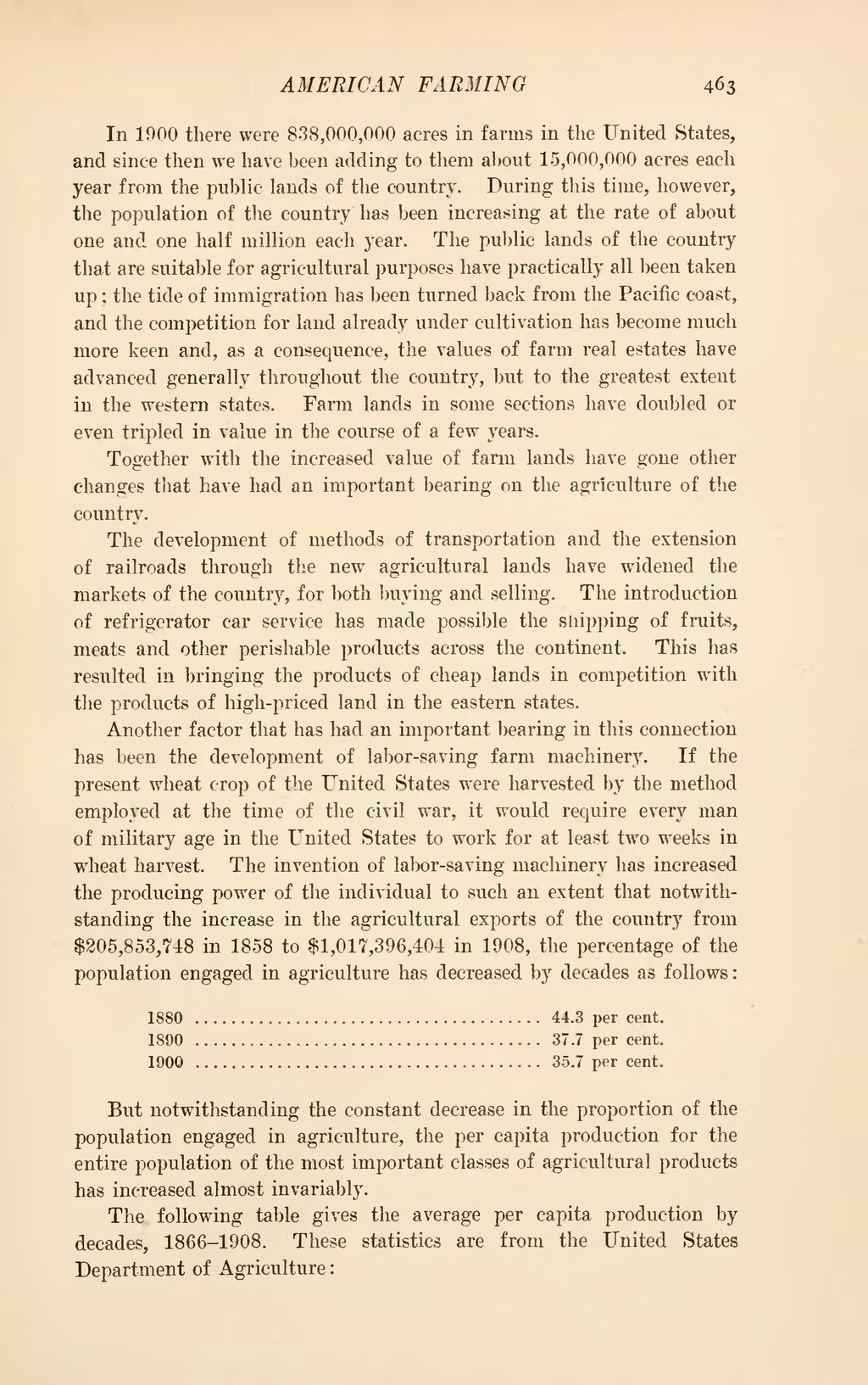In 1900 there were 838,000,000 acres in farms in the United States, and since then we have been adding to them about 15,000,000 acres each year from the public lands of the country. During this time, however, the population of the country has been increasing at the rate of about one and one half million each year. The public lands of the country that are suitable for agricultural purposes have practically all been taken up; the tide of immigration has been turned back from the Pacific coast, and the competition for land already under cultivation has become much more keen and, as a consequence, the values of farm real estates have advanced generally throughout the country, but to the greatest extent in the western states. Farm lands in some sections have doubled or even tripled in value in the course of a few years.
Together with the increased value of farm lands have gone other changes that have had an important bearing on the agriculture of the country.
The development of methods of transportation and the extension of railroads through the new agricultural lands have widened the markets of the country, for both buying and selling. The introduction of refrigerator car service has made possible the snipping of fruits, meats and other perishable products across the continent. This has resulted in bringing the products of cheap lands in competition with the products of high-priced land in the eastern states.
Another factor that has had an important bearing in this connection has been the development of labor-saving farm machinery. If the present wheat crop of the United States were harvested by the method employed at the time of the civil war, it would require every man of military age in the United States to work for at least two weeks in wheat harvest. The invention of labor-saving machinery has increased the producing power of the individual to such an extent that notwithstanding the increase in the agricultural exports of the country from $205,853,748 in 1858 to $1,017,396,404 in 1908, the percentage of the population engaged in agriculture has decreased by decades as follows:
| 1880 | 44.3 | per cent. |
| 1890 | 37.7 | per cent. |
| 1900 | 35.7 | per cent. |
But notwithstanding the constant decrease in the proportion of the population engaged in agriculture, the per capita production for the entire population of the most important classes of agricultural products has increased almost invariably.
The following table gives the average per capita production by decades, 1866-1908. These statistics are from the United States Department of Agriculture:

